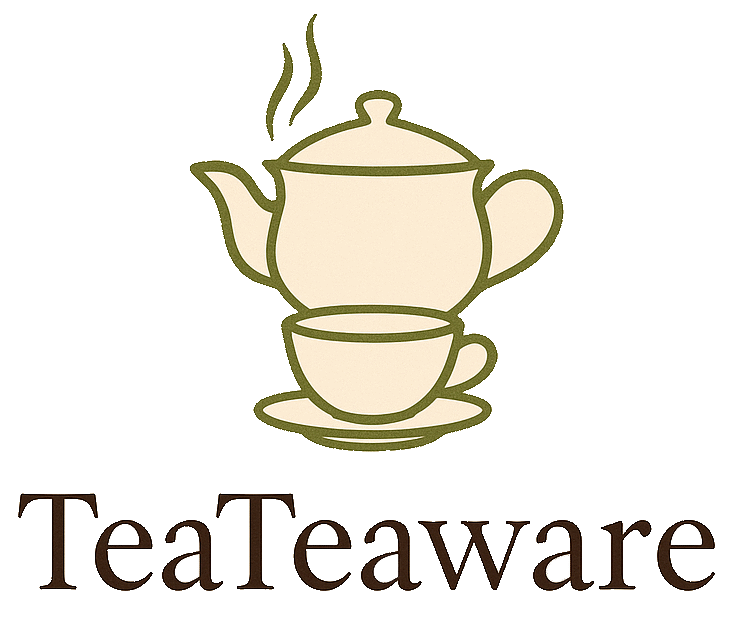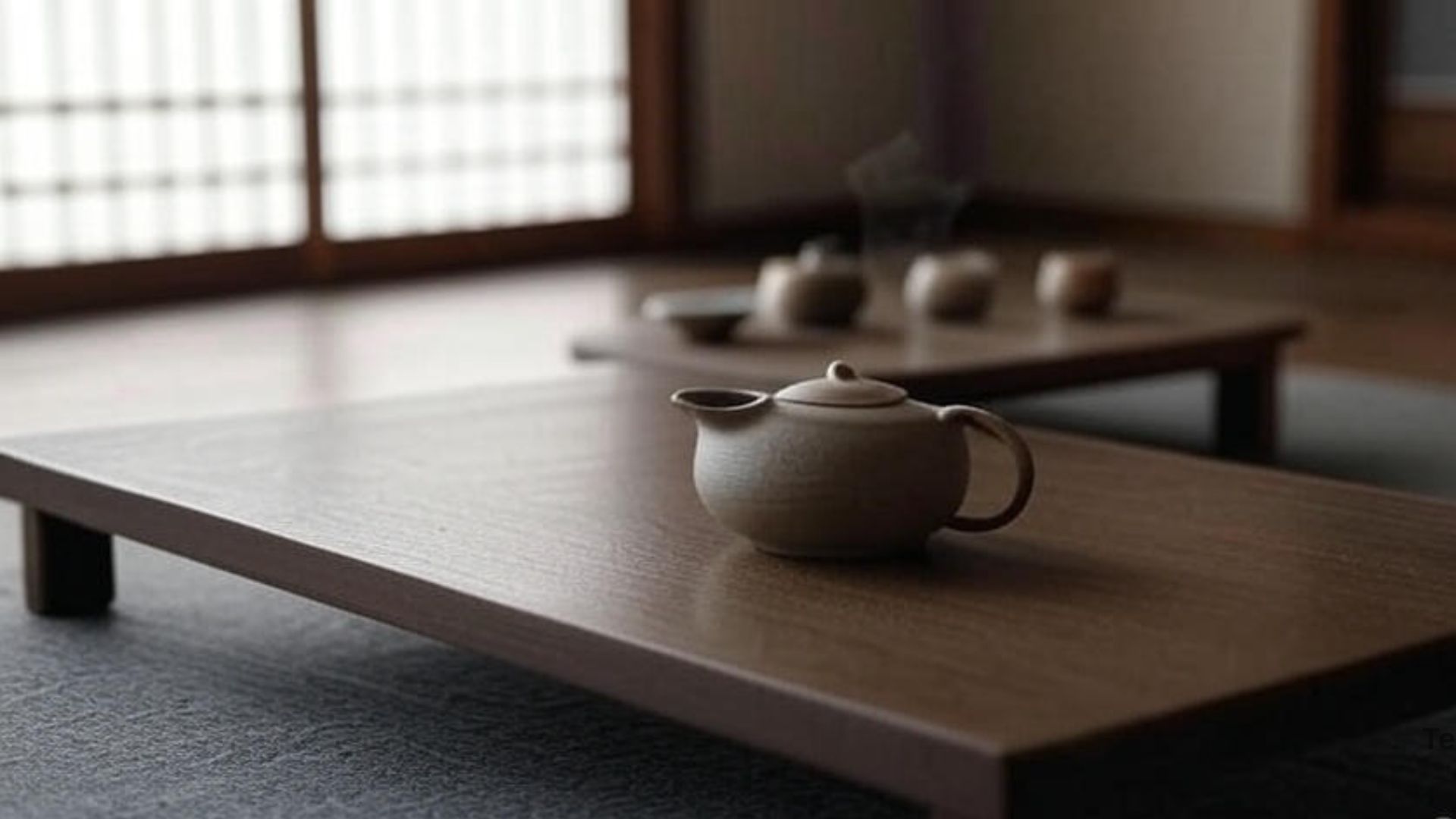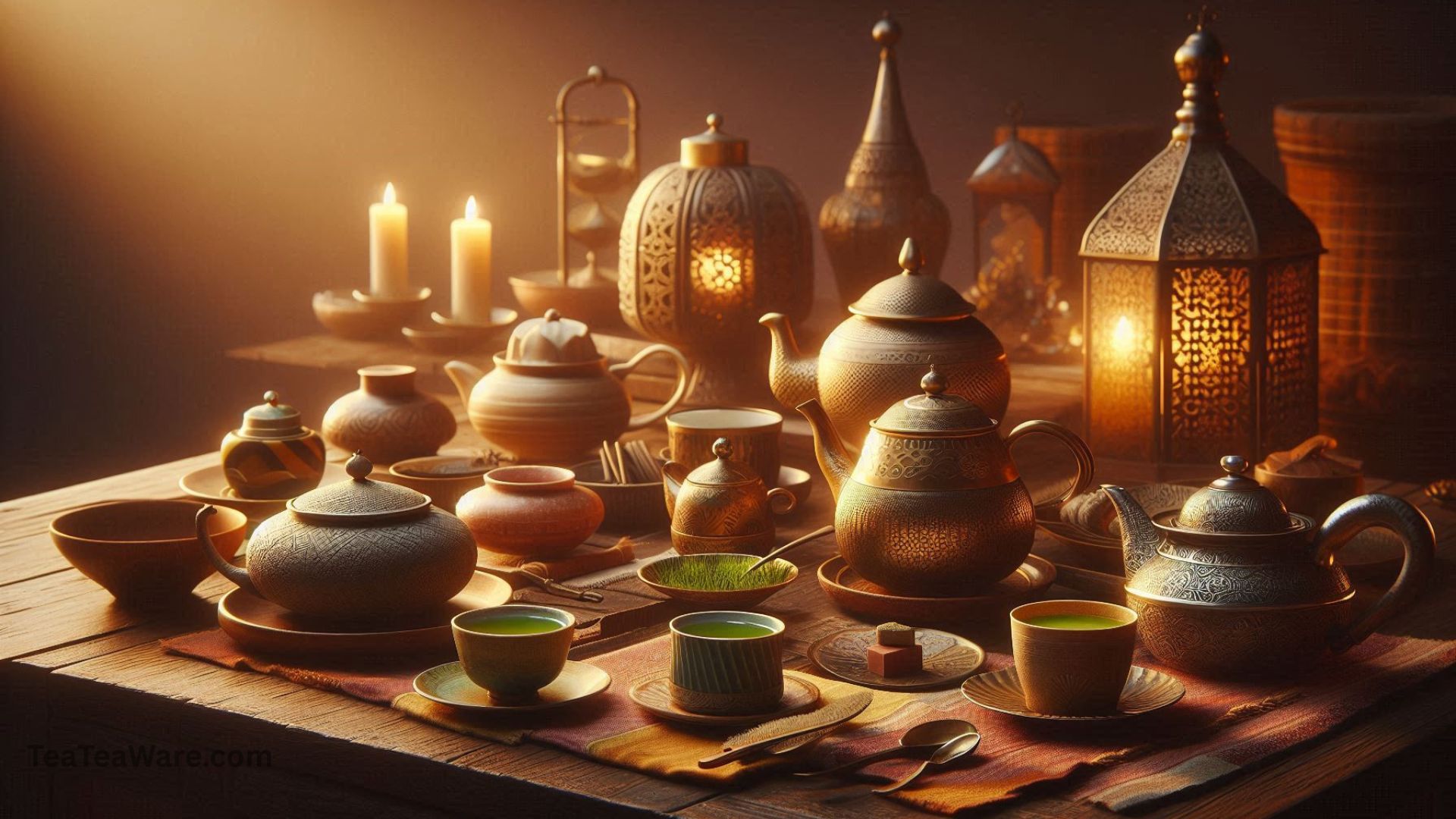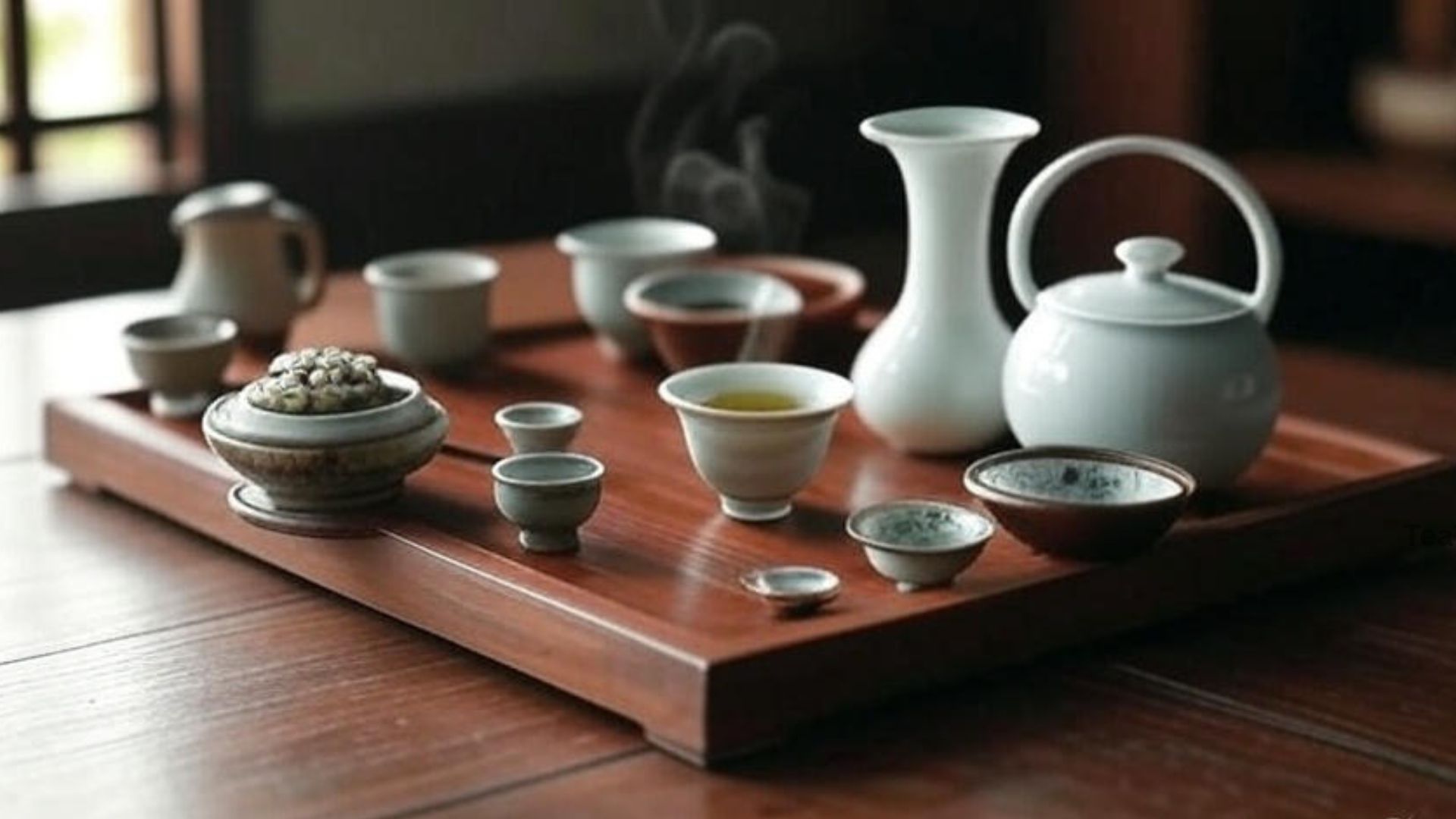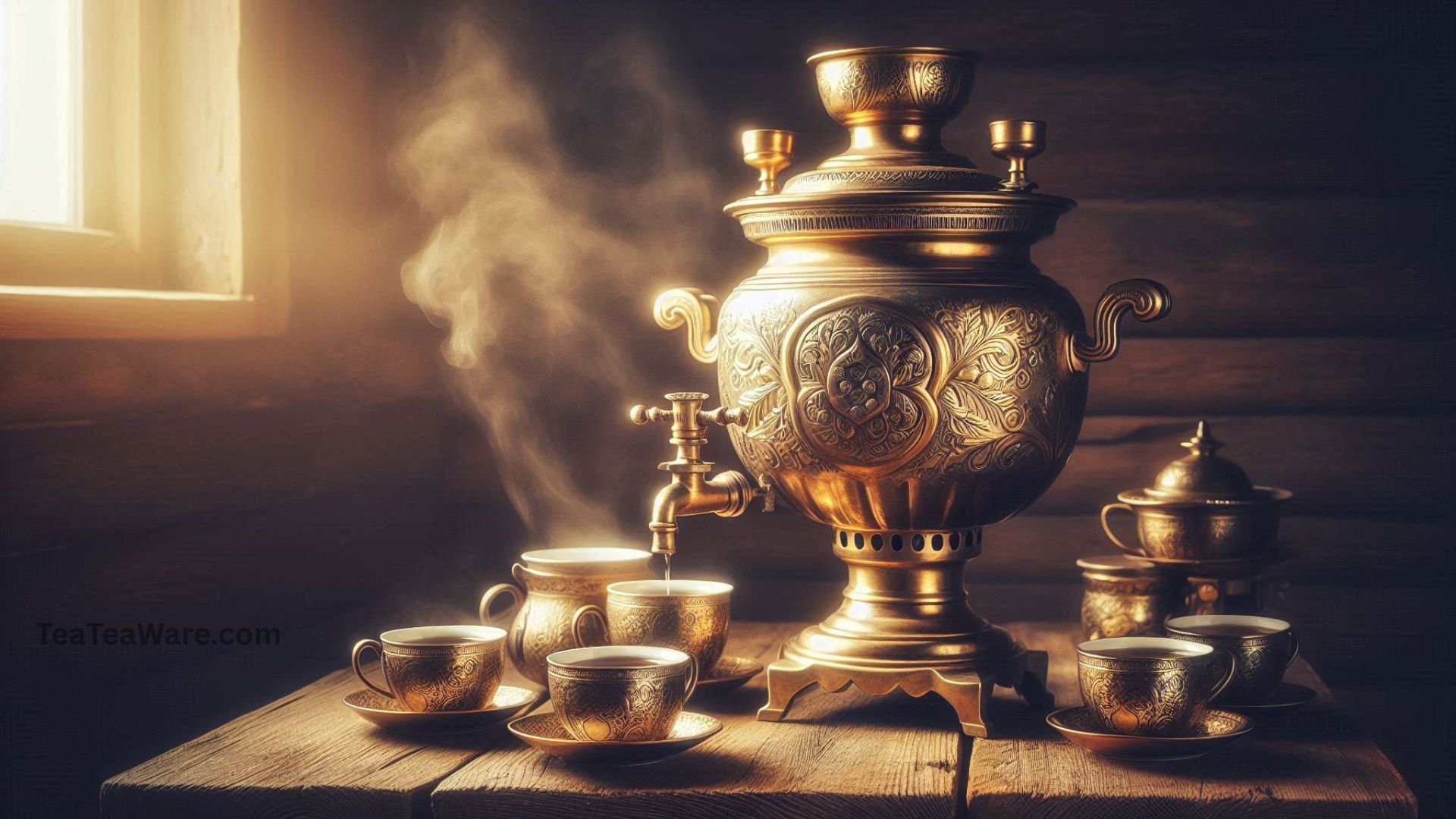Korean tea culture is more than a beverage ritual—it’s a philosophy of calm living. Rooted in centuries of spiritual practice, Korean tea traditions embrace simplicity, mindfulness, and harmony with nature. While Chinese and Japanese ceremonies emphasize precision or complexity, Korea’s tea approach focuses on serenity and natural flow.
In this comprehensive guide, we’ll uncover where Korean tea is grown, explore the Dado (Way of Tea) ceremony, compare Asian tea traditions, and highlight the minimalist beauty of Korean teaware. You’ll also find expert brewing tips, FAQs, and ideas for embracing Korean tea rituals in your own home.
The Heart of Korean Tea Culture
The story of Korean tea begins in the 7th century, when Buddhist monks brought tea from China to aid in meditation. Over time, it evolved into a social and spiritual practice, reflecting the Korean ethos of balance, respect, and tranquility.
Unlike Japan’s formal tea ceremonies or China’s complex brewing art, Korean tea culture values understated beauty. Each cup of tea represents a quiet appreciation of the present moment—a meditative pause amid daily life.
💡 Expert Tip: The Korean approach isn’t about perfection—it’s about presence. Every movement, from pouring water to lifting the cup, invites mindfulne
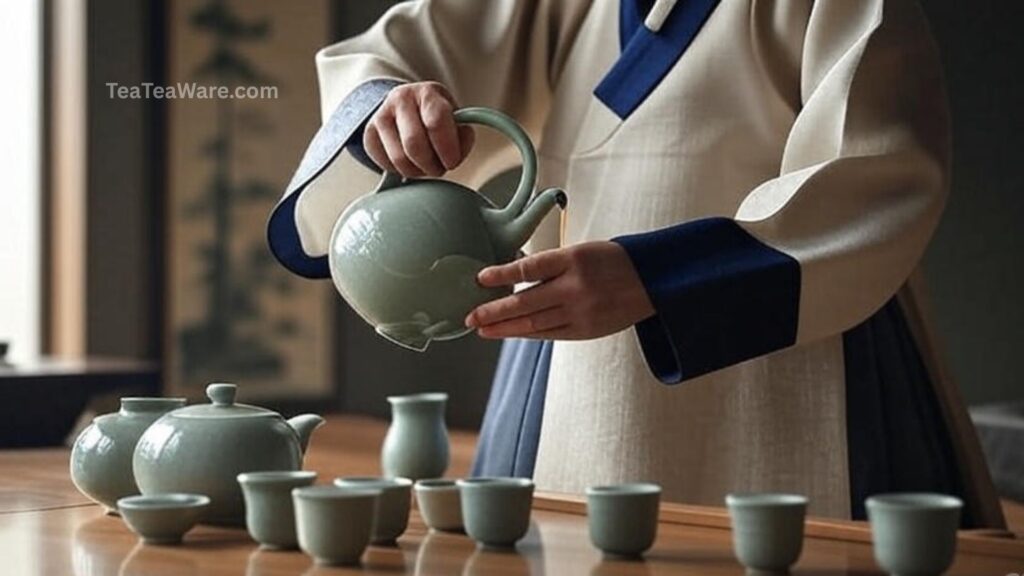
Where Korean Tea Is Grown
Korea’s mountainous terrain and oceanic climate create the perfect environment for cultivating fine teas. Three main regions define its tea heritage:
| Region | Characteristics | Famous For |
|---|---|---|
| Hadong | Misty mountains, pure rivers, ancient tea fields | Birthplace of Korean green tea, light and floral flavors |
| Boseong | Rolling tea plantations and deep soil | Rich, bold teas with a distinct umami note |
| Jeju Island | Volcanic soil, mild coastal weather | Unique green and black teas grown in mineral-rich conditions |
Each region offers its own terroir, giving Korean tea a character shaped by the land itself. For travelers, Boseong Green Tea Fields and Osulloc Tea Museum on Jeju Island are must-see destinations.
🌿 Fun Fact: Korea’s tea cultivation emphasizes organic and small-scale farming, aligning perfectly with the minimalist values of sustainability and purity.
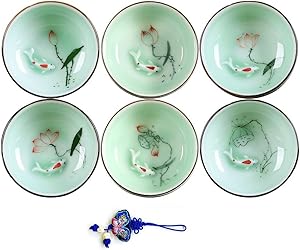
Hand Painted Kungfu Teacup
Celadon ceramics are deeply rooted in Korean tea tradition. This minimalist yet beautiful teacup set highlights the balance and calm central to Korean tea rituals.
Also Read: How to Clean a Glass Teapot Without Scratching It
Where Korean Tea Is Grown
Dado (茶道) translates to “The Way of Tea,” but it’s less about rules and more about spirit. The ceremony celebrates peace, respect, and gratitude.
Steps in a Traditional Korean Tea Ceremony
- Warm the Teapot and Cups – This step awakens the porcelain and ensures full aroma release.
- Measure the Tea Leaves – Use a bamboo scoop (Cha Sab) to add just the right amount.
- Pour Hot Water (80–90°C) – Gentle heat preserves flavor and avoids bitterness.
- Steep and Serve Gracefully – The host pours slowly into small cups (Dahjan), often in a rhythmic motion.
- Share the Moment – Conversation pauses as each sip draws focus inward.
The ceremony is often conducted in silence or soft conversation, embodying the Korean philosophy of understated beauty (so-seong).
☕ Pro Tip: In Dado, how you prepare tea matters as much as how it tastes. Savor the aroma, observe the color, and let your senses lead.
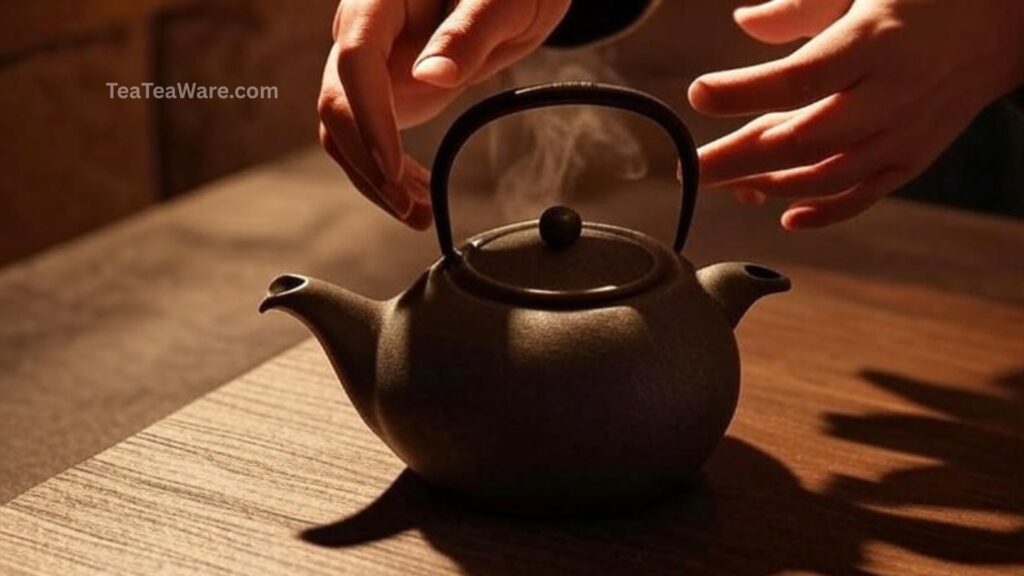
Minimalist Teaware in Korean Tea Culture
Korean teaware is the perfect reflection of the nation’s minimalist design principles—function, form, and quiet elegance.
Popular Korean Teaware
| Type | Description |
|---|---|
| Celadon Ceramics | Iconic blue-green glaze with subtle hand-painted motifs. Each piece symbolizes harmony. |
| White Porcelain Teapots | Sleek, neutral tones ideal for modern minimalist homes. |
| Bamboo Tea Scoops (Cha Sab) | Lightweight tools used for measuring tea leaves. |
| Tea Trays (Cha Pan) | Wooden or ceramic trays for serving and organizing utensils. |
Minimalist design in Korean teaware isn’t about absence—it’s about intentional simplicity. The beauty lies in texture, glaze, and gentle imperfections that reflect human touch.
🏺 Design Insight: Many modern Korean potters still follow ancient celadon techniques from the Goryeo Dynasty, renowned worldwide for their subtle jade-like finish.
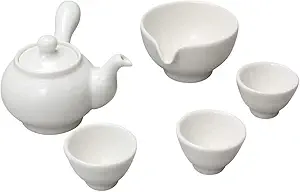
Korean Style Pure White Porcelain Tea
Designed with clean lines and neutral tones, this teapot represents modern Korean minimalism while honoring traditional form.
Also Read: Teaware in Turkish Tea Culture: A Deep Dive
Comparing Tea Cultures: Korea, China & Japan
| Feature | Korea | China | Japan |
|---|---|---|---|
| Philosophy | Relaxed, meditative, nature-focused | Technical and diverse | Formal, precise, aesthetic |
| Tea Types | Green, fermented, herbal | Oolong, pu-erh, white, green | Matcha, sencha, hojicha |
| Ceremony Style | Simple, slow, mindful | Gongfu-style, multiple infusions | Highly choreographed |
| Cultural Focus | Connection with nature and peace | Mastery of technique | Harmony and discipline |
| Unique Herbs | Persimmon, jujube, pine needles | Chrysanthemum, jasmine | Matcha, roasted teas |
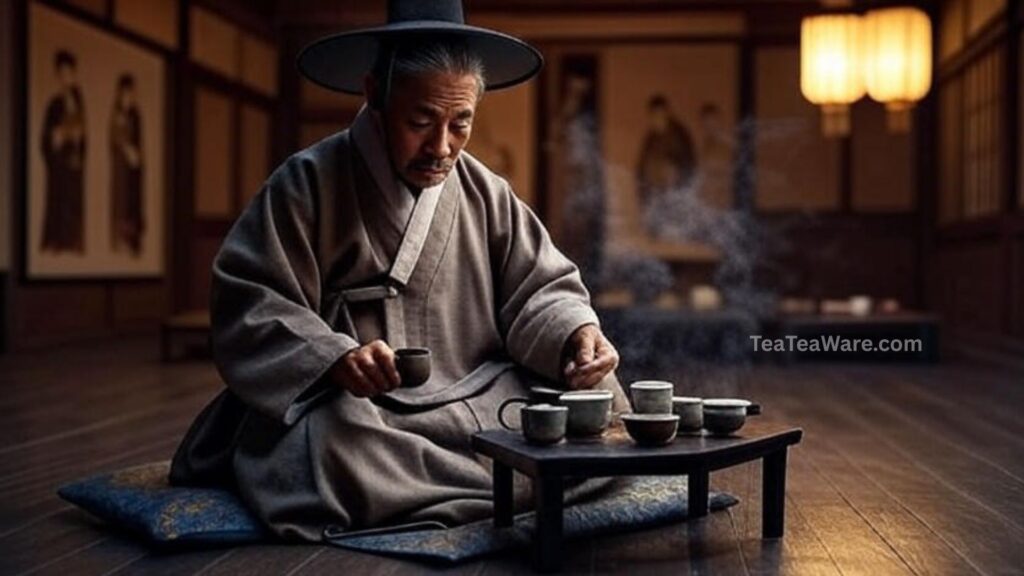
Korean tea culture bridges spiritual simplicity and earthly connection, offering a grounded alternative to the formal Japanese and technical Chinese traditions.
Tea in Korean Films and History
In Film
Korean cinema beautifully portrays tea as a symbol of mindfulness and solitude:
- 🎬 Spring, Summer, Fall, Winter… and Spring (2003): Tea as a tool of meditation in a Buddhist temple.
- 🎬 A Little Monk (2003): Daily tea rituals representing calm discipline.
In History
During the Goryeo and Joseon Dynasties, tea was both a spiritual offering and a diplomatic gift, symbolizing respect between leaders. Royal tea ceremonies often used celadon teaware—still prized today in museums like the National Museum of Korea.
📚 Cultural Note: Tea gatherings were not about status—they were about sincerity and balance, values still celebrated in modern Korean households.
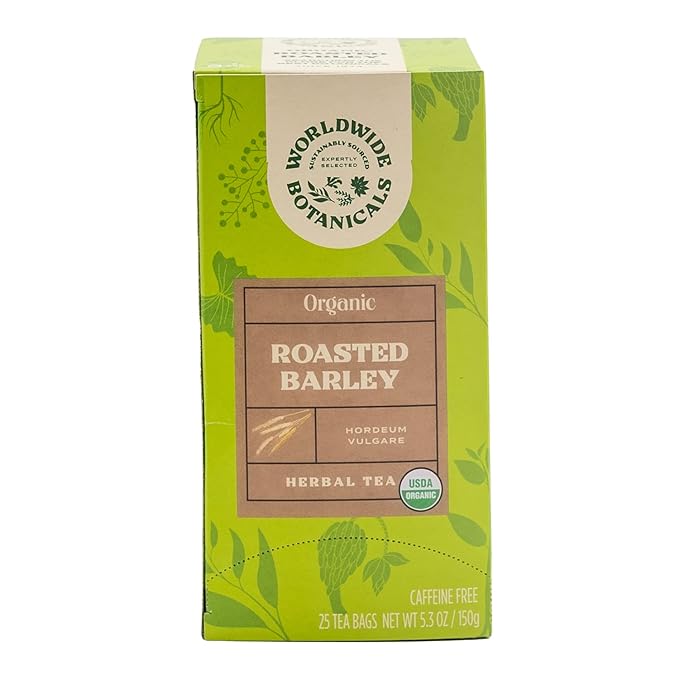
Worldwide Botanicals Organic Roasted Barley Tea
Barley tea is one of Korea’s most iconic everyday teas. This product lets readers try an authentic Korean tea experience at home using their minimalist teaware.
Also Read: Is Green Tea Good for Digestion? Best Brewing Methods
Popular Korean Teas
Types of Tea
- Nokcha (Green Tea): Light, refreshing, everyday favorite.
- Daejak (Fermented Tea): Robust flavor, ideal for cool seasons.
- Herbal Teas: Ginseng, ginger, jujube, or pine needle blends for health and vitality.
- Barley Tea (Boricha): A caffeine-free staple served hot or cold year-round.
Tea Grades
| Grade | Description | Ideal Time |
|---|---|---|
| Ujeon (First Flush) | Early spring leaves, soft and delicate | Morning meditation |
| Sejak (Second Flush) | Balanced flavor, lightly nutty | Midday refreshment |
| Jungjak (Third Flush) | Strong, bold taste | Evening gatherings |
🍵 Expert Tip: Pair Ujeon with quiet reflection and Jungjak with lively conversation—each grade carries a unique mood.
Tools You’ll Need for the Perfect Korean Tea
To embrace Dado at home, a few essential tools enhance the ritual:
- Dahgwan (Teapot): Ceramic or porcelain retains heat evenly.
- Dahjan (Teacups): Small cups encourage mindful sipping.
- Cha Sab (Bamboo Scoop): For measuring leaves precisely.
- Cha Yeogwagi (Strainer): Ensures smooth, sediment-free tea.
- Cha Pan (Tea Tray): Adds structure and beauty to your setup.
🧘 Tip: Keep your space uncluttered—Korean tea enjoyment is as much about environment as taste.
How to Truly Enjoy Korean Tea at Home
- Set the Scene: Choose a quiet corner with natural light and simple decor.
- Warm Your Utensils: Preheat your teapot and cups for fuller aroma.
- Mindful Sipping: Focus on the warmth, texture, and aftertaste of each sip.
- Pair with Traditional Snacks: Try tteok (rice cakes) or sweet chestnuts.
- Experiment: Blend teas with pine needles or ginseng for new experiences.
- Host a Tea Moment: Invite friends for a mindful break instead of a busy coffee chat.
🌸 Pro Insight: Korean tea culture encourages seasonal awareness—sip lighter teas in spring, roasted or fermented ones in winter.
Conclusion
Korean tea traditions are a celebration of simplicity, mindfulness, and aesthetic grace. Whether you’re steeping Nokcha on a tranquil morning or sharing Boricha with friends, you’re part of a centuries-old practice that honors balance and presence.
By embracing Dado and minimalist teaware, you transform tea drinking into a mindful art—one that invites peace and beauty into everyday life.
🛍️ Call to Action: Discover authentic Korean teas and minimalist teaware. Explore trusted sources like Osulloc, Wikipedia, or Healthline to deepen your understanding.
FAQs About Korean Tea
Q1. What is the main difference between Korean and Japanese tea ceremonies?
Korean ceremonies focus on mindfulness and simplicity, while Japanese ones emphasize structured aesthetics and precision.
Q2. Can Korean tea help with relaxation?
Yes—especially green and barley teas, which promote calmness and digestive health.
Q3. What is the best temperature for brewing Korean green tea?
Around 80–90°C (176–194°F) to avoid bitterness and preserve delicate flavor.
Q4. Are Korean teas available outside Korea?
Yes. Brands like Osulloc and Dong Suh export widely, and many online stores carry authentic Korean teas.
Q5. Which Korean teas are suitable for beginners?
Start with Nokcha (green tea) or Boricha (barley tea)—both mild and easy to brew.
